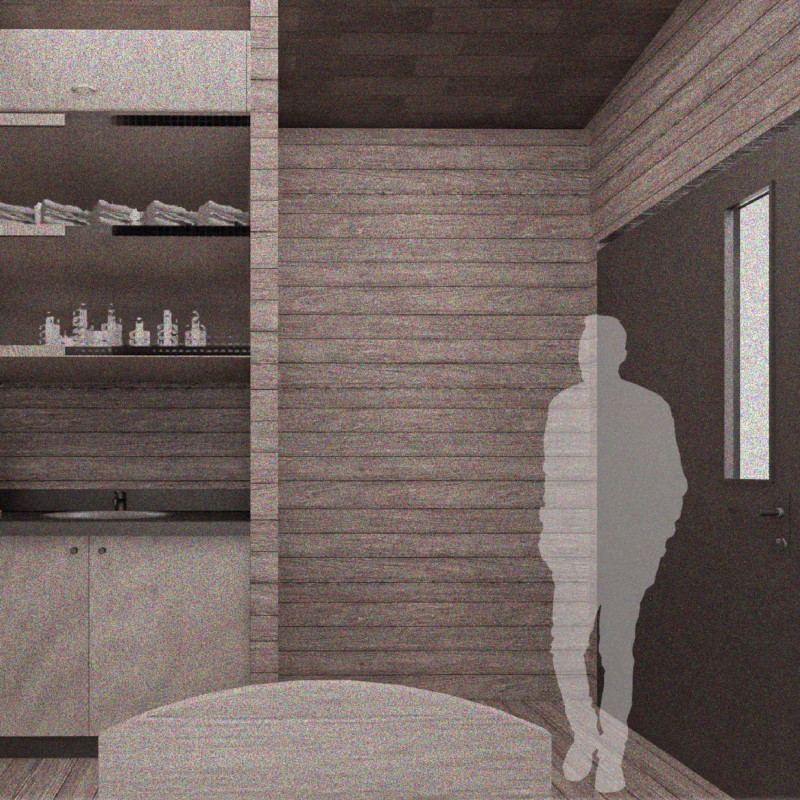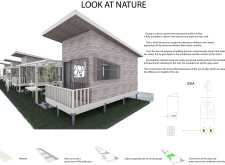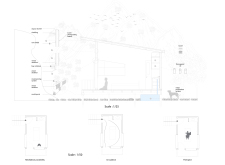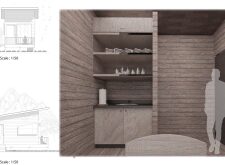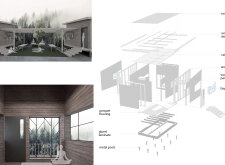5 key facts about this project
The core function of the project is to provide spaces for meditation and reflection, aimed at enhancing mental well-being for users. Each cabin is designed to function as a private yet communal experience, promoting individual relaxation while fostering community engagement through shared green spaces. The spatial organization facilitates easy movement and connection between cabins, allowing for a cohesive interaction with the environment.
Unique Design Approaches
“Look at Nature” employs several innovative design techniques that distinguish it from typical architectural developments. The orientation of the cabins is critical, as they are positioned to maximize views of the valley and surrounding natural features. This not only enhances the user experience but also allows natural light to penetrate the interiors effectively, reducing reliance on artificial lighting.
Sustainable materials play a central role in the project’s design philosophy. The use of wood for the exterior cladding aligns with the natural environment and provides insulation, while metal sheeting on the roofs offers durability against the elements. The cabins are elevated on metal posts to minimize ground disturbance, allowing the water flow beneath to remain natural and unimpeded. This thoughtful approach not only respects the existing ecosystem but also contributes to the overall aesthetic harmony.
Architectural Details and Functionality
The architectural design features curved walls within meditation spaces, creating an intimate atmosphere that encourages contemplation. This use of form not only adds visual interest but also enhances acoustic quality, further promoting a peaceful experience. Parquet flooring used inside the cabins provides a tactile warmth, inviting users to connect more deeply with their surroundings.
The community aspect is enhanced through shared paths that link the individual units, promoting interaction while retaining privacy. Green areas interspersed among the cabins serve as gathering spots for communal activities or quiet reflection, seamlessly integrating community engagement into the architectural fabric.
For further insights into the project, readers are encouraged to explore additional resources, including architectural plans, sections, and designs, which offer a comprehensive understanding of the architectural ideas behind “Look at Nature.” This project exemplifies how architecture can harmoniously coexist with nature while addressing the need for spaces designed for wellness and contemplation.


